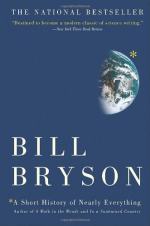
|
| Name: _________________________ | Period: ___________________ |
This quiz consists of 5 multiple choice and 5 short answer questions through Part 2, Chapter 7.
Multiple Choice Questions
1. In the 1700s, people were finding holes in theories. For example, if the thoughts on erosion were completely correct, then:
(a) Sand would be ground to fine powder.
(b) All farmland would have been washed away.
(c) Icebergs would have eroded long ago.
(d) There would be no mountains, only smooth hills.
2. James Hutton believed that the natural forces forming the geology of Earth are:
(a) Now extinct.
(b) Random and unpredictable.
(c) Impossible to classify.
(d) Still at work.
3. When radiation was first discovered, it was sometimes added to:
(a) Gasoline and alcohol.
(b) Stews and casseroles.
(c) Drinking water.
(d) Toothpastes and laxatives.
4. What happened to the dinosaur bone discovered in New Jersey in 1789?
(a) It was sold to a museum in England.
(b) It is on permanent display at the Smithsonian.
(c) It is part of a wealthy family's private collection.
(d) It had been permanently misplaced.
5. According to Einstein's theories, what is the nature of space?
(a) It is a straight line.
(b) It is a flat plane.
(c) It has missing points.
(d) It curves.
Short Answer Questions
1. Our universe is at least how many light-years wide?
2. When radiation was first discovered, people thought it must have:
3. When was Pluto discovered?
4. What did the French Compte de Buffon claim about the New World (the Americas) compared to the known Old World?
5. About how many stars are visible to the naked eye from Earth?
|
This section contains 275 words (approx. 1 page at 300 words per page) |

|




